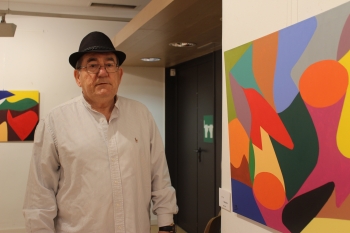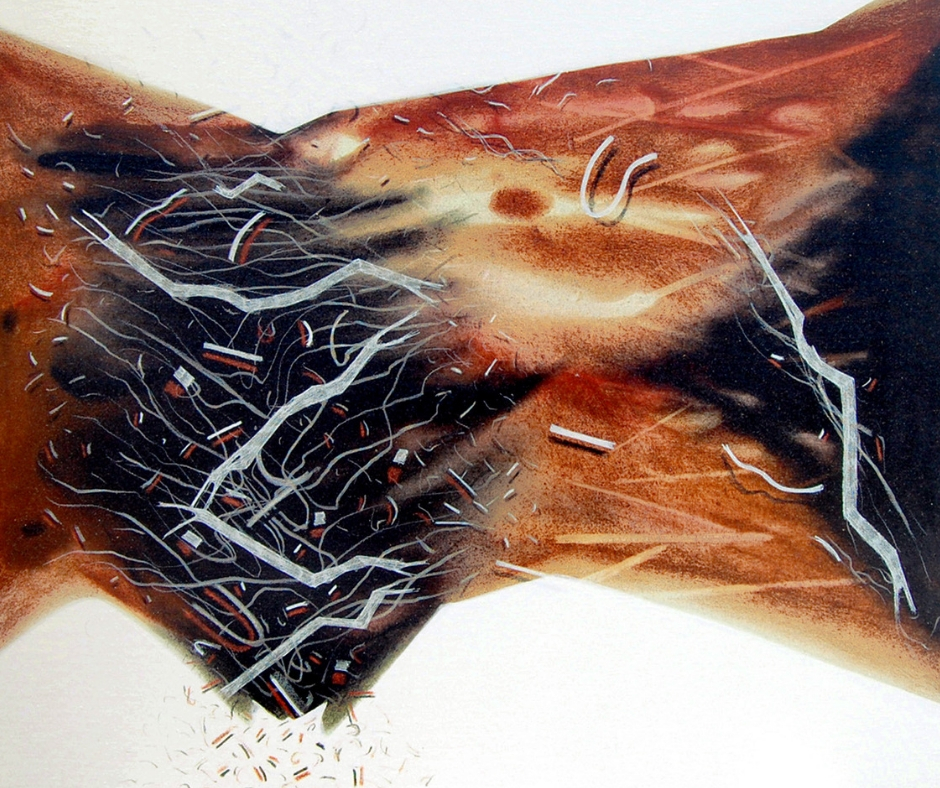
The world of art is stunning, beauteous, and enigmatic to an extent. You love art because…?
To be honest, the liking for art is not comprehended by many. People adore art but do they really understand it? Do you?
A layman would say that art is just an expression of an artist’s imagination and emotions. This is quite true for traditional artworks that mainly revolved around specific visuals and precise subjects that remind us of real-life elements and instances.
Shifting your glance towards art style like contemporary would tell you a different story though. There are many assumptions, myths, agreements, and disagreements about the Contemporary art style.
If you would search Google, a simple definition of contemporary art that will appear on the first page is “The art of our times” or “The art that is made in the present era”. Well, that is okay. But what about defining contemporary art as an expression.
What exactly is Contemporary Art? (Literally)
To grab the true taste of contemporary art let’s throw out all the previous definition and outlook of art. Contemporary means “living or occurring at the same time” or “belonging to or occurring in the present”.
Wikipedia says that Contemporary Art is the art of today, produced in the second half of the 20th century or in the 21st century. I do not disagree but at the same time not content with the diameter of this definition.
Contemporary art simply weeds off the idea of the aesthetics, i.e. the appearance of an artwork. The only thing that matters in contemporary art is the idea. It is about the conceptualisation and the concerns of the art.
Also Read: The Curious Case of Contemporary Art
If you follow contemporary art, you know how innovatively artists probe different methods, materials, and ideas to come up with a contemporaneous piece every time. Contemporary art is the newness in creation, in ideation, and in cognition.
The liberty, the freeness, and the idiosyncratic way of creating an artwork that could be a painting, sculptor, installation, video-art, performance, etc is what contemporary art is all about.
So, the next time anyone asks “What do you mean by contemporary art?” I’m sure you would be able to give them a subtle answer.
Contemporary Art Characteristics: Analysis
The rawness and the crisp nature of contemporary art have compelled millions of people to follow this style in very less time. What traditional art accomplished in thousands of years, what modern art achieved in a century span, Contemporary art is able to win in just a few decades. But how?
Few of the art experts strongly put on the case saying ‘Contemporary is what we can finally say the art of our world’. Hmm… Art of our world!
Hearing this proposition, I couldn’t resist myself from bridging a connection between art and the world. Contemporary art meaning and its manifestation cries out loud to something more crucial and less captivating than art. And this type of creation is produced in our epoch, that’s it.
So, in a broader perspective, Contemporary art is just a latest extension to the long trail of art that goes back to the pre-historic times. Simply said, Contemporary art is just another chapter of an art book.
One of the most illuminating ways to define Contemporary art is the expression of an artist to convey that the world is too complex to be comprehended and encompass. If you would try to get in line with an individual or a group’s action with your logic, the entire scenario would look rather absurd. Isn’t the same emotions evoke out of you when you witness a contemporary piece?
Contemporary works are complex, baffling, and yet a treat to eyes because they are able to generate that explicit sense of comprehension out of humans depicting that our world is connected with multiple cords that have versatile intensities of different cultures, nations, and individuals.
Contemporary art and its history
After deciphering the meaning and contemporary art features, we are now shifting our focus to what timeline does this coetaneous style belongs to. As per the standard definition, Contemporary art is the pieces or work produced by the artists since 1970s till present.
Now it all may seem quite convenient but the debatable argument is that contemporary artworks were produced way before the second half of the 20th century.
The codification of contemporary art goes back to the dawn of Modernism in the nations where English was the dominant dialect. The prominent artist named Rogic Fry incepted Contemporary Art Society in London in 1910. Adding to the list is the establishment of the Contemporary Art Society of Adelaide, Australia in 1938.
In fact, after the conclusion of World War 2, the number of contemporary art institutions spurred ferociously. So, how come contemporary art sneaked in the time-frame of Modernism?
Modernism and movements prior to it were slowly unfolding the red carpet for contemporary art to enter and become an evolutionary form that can be accepted by the entire world. Even the art movements that emerged post-WWII laid a strong foundation for the contemporary form to build its fort.
Let’s take a quick look at some of the movements of the 20th century that were preparing a strong platform for contemporary art to land on.
Also Read: Evolution of Indian Contemporary Art
Unfolding Contemporary art history with examples
Modernism was at its peak in the mid of 20th century. The Second World War was over and the entire world equilibrium was transformed for the best. New York replaced Paris as the art capital of the world and the USA became the new superpower.
This was a transitional period when artists were daring to try out inventive methods to express themselves and the liberation of art was at its apex.
Pop Art
This was the firsts of the movements that begun transforming the idea of shaping modern style into a much ambiguous and liberated type of creations. Pop art marked its arrival in the 1950s and was practiced quite popularly till the 1970s. Eminent artists of this era were Andy Warhol, Roy Lichtenstein, etc, who missioned to represent mass culture through their creations.
For an instance, look at this masterpiece of Warhol, where he subtly and sophisticatedly reflect varied shades of Marilyn Monroe by representing 4 tablets each of précised 40 inches.
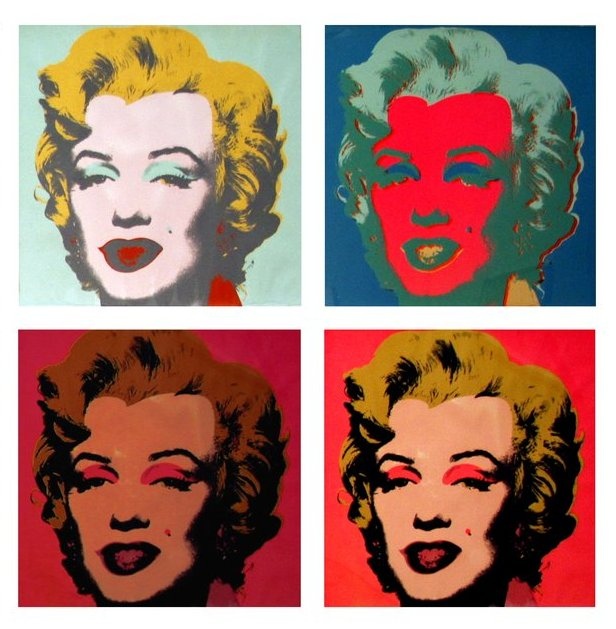
Source: arthipo (Shot Marilyns)
If you think that the journey of Pop art ended in the 1970s, it didn’t. Artist Jeff Koons brought back this form by revamping it and naming it as Neo-Pop Art in the 1980s.
His work was revolutionary in setting the stage for future artists to dare to come up with fresh and ecstatic creations. Below is his exquisite work ‘Balloon Dog (blue)’ that mesmerised a number of art lovers globally.
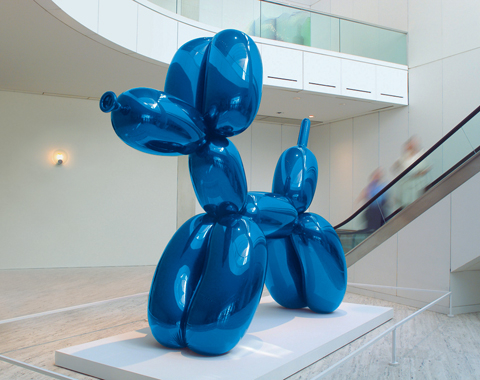
Source: Jeff Koons
Photorealism
Pop art was all about the reproduction of objects in an artistic and aesthetic manner. Inspired by this another movement named as Photorealism hit the market. These artists wanted to develop surrealistic paintings and sketches. The source of these creations were the photographs seen which the artists started creating précised landscapes, portraits, and allied iconographies.
Chuck Close, a renowned artist of Photorealism didn’t shy away to bring down some alluring and captivating images that stumped the observers. His ‘Fanny/Fingerpainting’, which was developed in the year 1985, shows his artistic mastery and skilfulness (Yes, he created this heart-catching portrait using his fingers only).
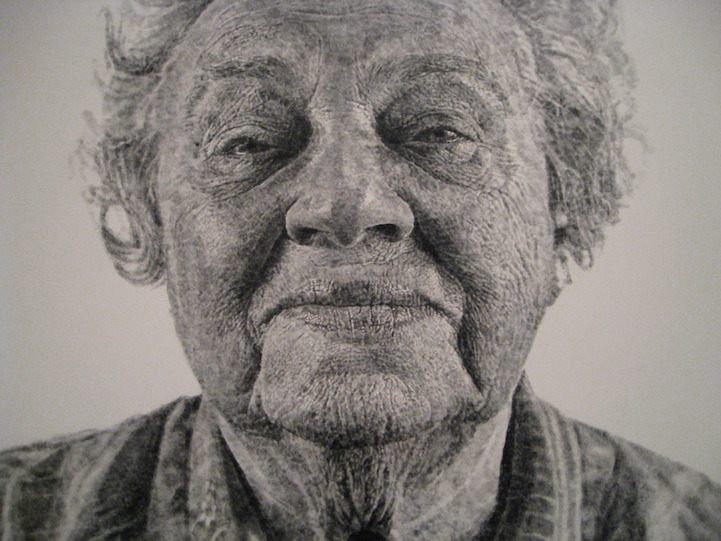
Source: My Modern Net
Conceptualism
For thousands of years, art was considered a commodity, an idea that was strongly rejected by modern artists. Pop art as stated was the lowest bricklayer that supported the rest of the movements to pave a frictionless path for contemporary art to slowly bolster its presence. This happened with conceptualism also, which is an art style that was moulded by Pop art.
Started as a formal art movement, conceptualism is still practiced as one of the types of contemporary art. Conceptual art is all about the thought process that put the ideation process of an artistic creation takes anteposition.
Artists like Jenny Holzer, Damien Hirst, and Ai Wei Wei strengthened this art movement by producing some of the most exclusive contemporary creations of our times.
Take a look at this perplexed (in meaning) and simple creation of Ai Wei Wei that jolted the entire art world with the appeal and embedded comprehension.
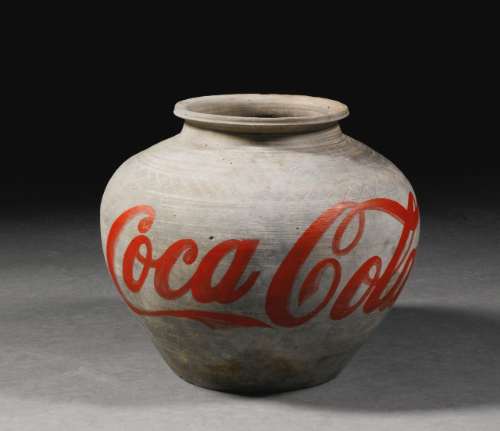
Source: Sotheby’s
Minimalism
What is the meaning of contemporary art? The entire world is busy praising and appreciating the scintillating expression of this art style, but the artists in the 1960s were already clear about the apprehension of the contemporary art meaning. This is again, one of the types of contemporary art that can be still seen today in the market. The essence of minimalist creations lies in the challenges these pieces offer w.r.t the development, classification, and visualisation of art. Minimalism empowers the observers to react to an artwork as per their comprehension and experience and rejects every conventional representation.
The following work of renowned minimalist, Sol LeWitt showcases the blissfulness and exclusivity of these art pieces.
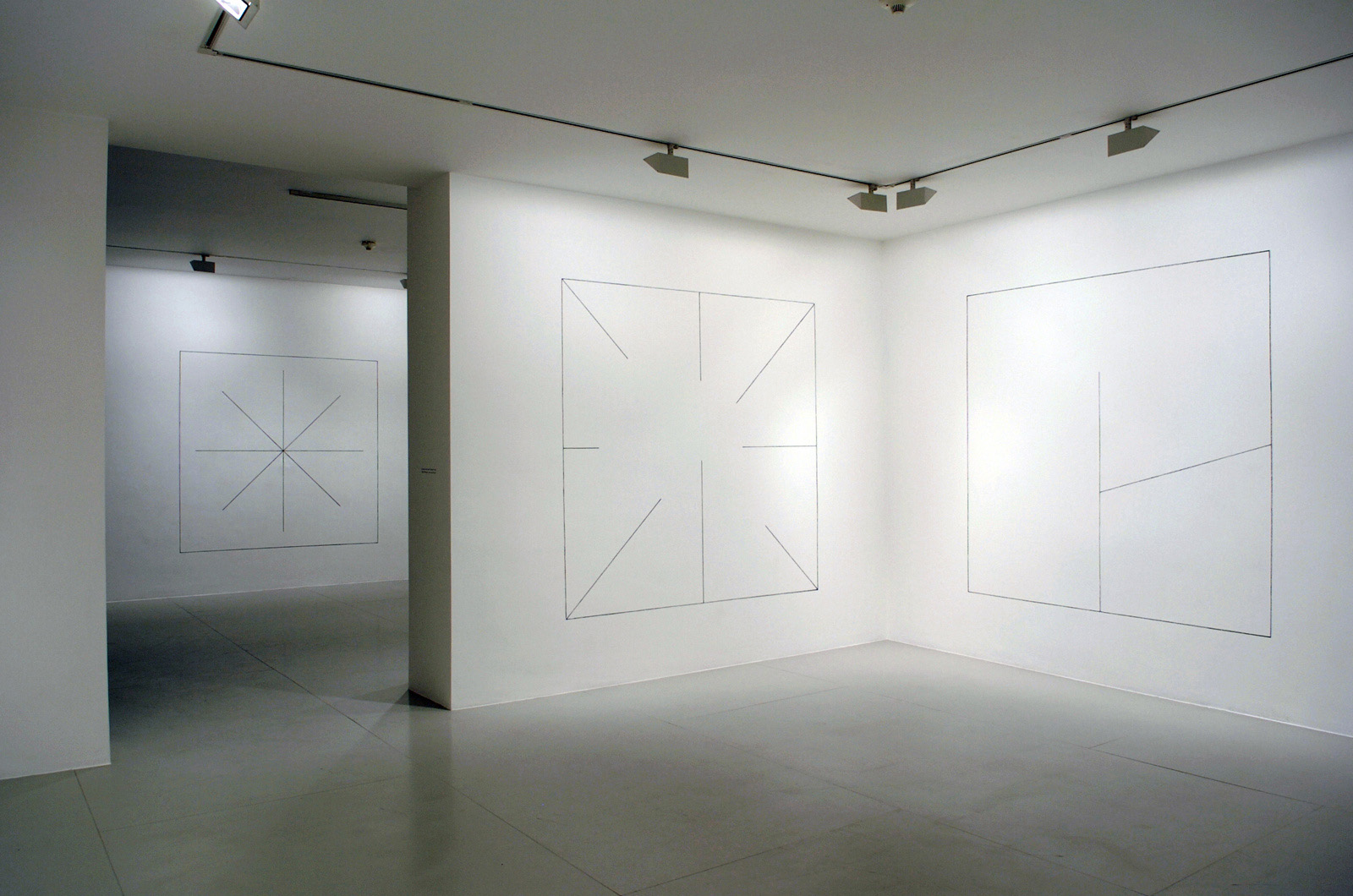
Sol LeWitt, ‘Wall Drawings’ (2006)
Source: Lisson Gallery
These are the best contemporary art examples, a lot of which is still prevalent and practices in the global market. Contemporary art and its history, thus expand from a century-long span where artists have continuously worked on to liberate themselves from the idea of realistic and any thought process that bounds them to create within a restriction.
Also Read: 9 Most Horrifying Contemporary Art Pieces We Dare You to See
Contemporary Art vs Modern Art
The terms ‘contemporary’ and ‘modern’ are synonyms but when these words are stringed with art, there is a difference. A lot of art experts and aficionados fail to understand the real difference between modern and contemporary art because of so much similarity between the two terms.
Now we all know what is contemporary art and its history. Additionally, both, modern and contemporary art forms are known to encourage the idea of freedom and rejection of the traditional & academic style of art creation.
The very first difference between the two is the time period in which these two were created.
Modern paintings came into existence in the middle of the 19th century and lasted till the 1960s (till Pop art emerged). The industrial revolution gave birth to a colossal new class of people known as Middle Class. The difference in thoughts, beliefs, and rise of a new section in the society lead to many revolutions in modern times. The independence of the USA, along with quite a many European nations, followed by the French revolution changed the entire dynamics of the world.
Artists now started feeling cheated that all they could create what was visible to them in the real-life. The artistry was appreciated but if an artist shows newness in his/her thinking, there were many critics. Also, people wanted to transform the fact that artworks were not limited to only elites. The modern artists began to slowly move away from the real-life works with the emergence of movements like Impressionism. Slowly, Cubism, Fauvism, and then Abstraction took the command.
Many great artists enlightened the world with their majestic creations and out-of-the-box thinking. Some of these were Pablo Picasso, Jackson Pollock, Claude Monet, Henri Matisse, Vincent William Van Gough, etc. The artworks were experimental and almost in every couple of years, one or another artist was coming up with another exclusive but appealing method to create paintings.
One of the biggest differences between contemporary art vs modern art is that in the latter only paintings were developed. However, to define contemporary art, you cannot limit to just paintings.
Contemporary style and movement has actually far more artists involved leading to a much higher number of artworks being produced. Last 3 decades have seen the inclination of contemporary art form towards issues that have been influencing the society. Some of these issues are feminism, multiculturalism, globalization, bioengineering, and AIDS awareness.
So modern art is mainly associated with the liberation of art and experimentation of new tactics that on one hand, completely throw away the conventions associated with the art world, and on the other, worked as a catalyst for the transition in transportation, manufacturing, technology, and other sectors that had a direct impact on the lives of common people.
Contemporary art meaning, however, revolves around the reaction of artists to the modern art. The contemporary works we see today represent a society, which regards cultural diversity, globalism, technology, etc at a high position. Thus, contemporary art characteristics mainly revolve around the depiction of a mass culture.
What’s next?
Contemporary art and its track record have shown the beginning of this form was somehow related to the idea of modernism. Artists in our times are much bolder, fearless, risk-takers, and innovators in their own terms. Even the art lovers have completely transformed the way of perceiving art. The time when aesthetics in an artwork was considered a necessary proposition has long gone. Today, with each work, artists are trying to evoke different emotions and responses from observers.
Well, does that means that art is on its threshold? IMHO, art can never be on its threshold as it is a resultant of our mind’s creation and that is limitless. Of course, we are seeing a revolutionary transformation in the way art is created and experienced. Technology and globalization are playing vital roles in this.
But with even newer and ultra-modern tech now coming up and people getting more aware on the topics like consciousness and self-motivation, art will experience another transition. Now, will that transition come quickly or still a few centuries ahead, that depends. If lucky enough maybe you can witness it and will be reading a new blog by me on the same. Till then, keep enjoying art and next time you hear words like “What do you mean by contemporary art?” do not shy away to clear the air.
















